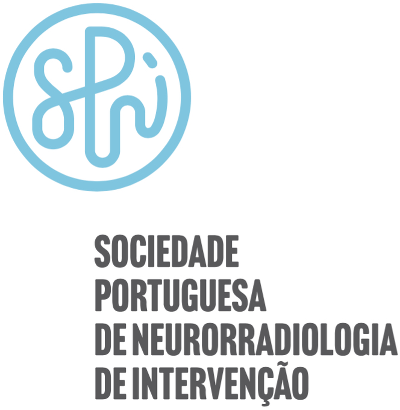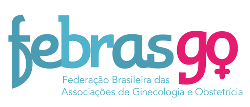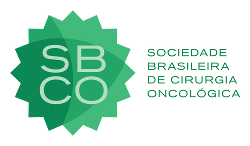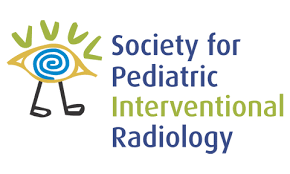DEADLINE TO SUBMIT ABSTRACTS Deadline: UP TO 06.08.2018 Results: UP TO 07.10.2018 |
HOW TO SUBMIT YOUR ABSTRACT
Submit your abstract
- Visit http://ci.eventus.com.br/sobrice2018/en
- Sign up or enter your account (if you have one). It is not necessary to settle the payment when you sign up. You can settle the payment after you are informed that your abstract was accepted.
- Click on "Abstracts/Papers", and then click on “Send new abstract”.
- Follow the instructions on the screen and fill out all the items on the form. All abstracts will be in poster format. Remember to consult the required mandatory structure for your modality.
- To conclude the submission of your abstract, click on "Next step", check all the information and then click on “Confirm sending”.
- You can make changes in your abstract until the send deadline, which is June 08, 2018.
INSTRUCTIONS TO PREPARE ABSTRACTS
Rules for the sending of papers for the 21st SOBRICE Conference.
The papers submitted for approval must:
- Be written in structured abstract format.
- Contain up to a maximum of 2,000 characters (not counting spaces between words, the title, bibliography or sessions – ex: objective).
- Presented in Word Text format, Arial, size 12.
Obey the following sequence:
- Title of the paper (mandatory).
- Maximum of 10 authors.
- Name of institution where the work was conducted.
- Must be organized according to the required structure (mandatory) for each type of clinical study (case report, series of cases, experimental study and clinical essay). See the required structure below.
- Bibliography according to the Vancouver rules.
- The first author or one of the co-authors of the paper must sign up for the event.
- Only one certificate will be issued for each submitted paper. The certificates will be issued based on the order in which the authors signed up.
- The decision of the Scientific Committee is final and irrevocable.
- All papers will be evaluated in two phases. The first evaluation will focus on the abstract and the second evaluation will focus on the oral presentation which will take place during the Conference. The authors will be informed in advance of the date on which they will give their presentations.
- In the oral presentation phase, the ten papers that obtained the highest scores during the abstract evaluation phase will be presented in PowerPoint format on a stage prepared for this purpose. The other papers will be displayed in poster sessions.
- The papers classified for presentations in PowerPoint format will be allotted five minutes for oral presentations and three minutes for discussion (Total 8 min).
- The papers classified for presentation in poster sessions will be allotted four minutes for oral presentation and one minute for discussion (Total 5 min).
Attention: All materials prepared for the abstracts (annals, certificates, among others) will contain the accurate reproduction of the information submitted by the author. Therefore, it will not be possible to make any changes to the lettering of the title, abstract, or authors after the deadline to submit the papers expires. The submitted information must contain the full information on the author submitting the abstract.
REQUIRED MANDATORY STRUCTURE
CASE REPORTS
Case Reports - up to two cases (divided into three mandatory sessions).
- Objective: briefly describe the purpose of your case report.
- Optional: in this session you may write a short introduction before describing the objective. This is not mandatory.
- Case Report: present summarized clinical records, image and laboratory findings ( the most relevant ones), the procedures and post-treatment evolution.
- Discussion: compare your findings with those found in literature.
- Optional: in this session, you may write a short conclusion in the last paragraph of the discussion. This is not obligatory.
SERIES OF CASES
Reports on three to nine cases (divided into three mandatory sessions).
- Objective: briefly describe the purpose of the series of cases.
- Optional: in this session you may write a small introduction before describing the objective. This is not mandatory.
- Case Reports: present a summary of the clinical records, image and laboratory findings (the more relevant ones), the procedures and the post-treatment evolution.
- Discussion: compare your findings with those mentioned in literature.
- Optional: in this session you may write a short conclusion in the last paragraph of the discussion. This is not mandatory.
EXPERIMENTAL STUDIES
Experiments with animals or in laboratories (divide into five mandatory sessions).
- Objective: briefly describe the objective of your study.
- Optional: in this session you may write a short introduction before describing the objective. This is not mandatory.
- Materials and Methods: describe the proposed experimental method, the selection method and the characteristics of the animals, the materials (the characteristics of the materials – type, curve, size, measurements and trademark) you used and the procedure. Statistical tests used in the experiment must be mentioned.
- Results: present the results.
- Discussion: discuss your results objectively (compare the results with those found in literature, if you feel this is necessary). You may describe the limitations of your work in the last sentence of the discussion.
- Conclusion: the conclusion must be exclusively based on the results of YOUR study. DO NOT CONCLUDE your work on the basis of results found in literature. Recommendations can be made, when appropriate.
CLINICAL ESSAY
Clinical essays with human beings, results of clinical research or routine treatments (divided into five mandatory sessions).
- Objective: provide a brief description of the objective of your work.
- Optional: in this session you can write a short introduction prior to describing the objective. This is not mandatory.
- Materials and Methods: describe the nature of the materials used in the research work, as well as the patient selection method, the materials (the characteristics of the materials – type, curve, size, measurements and trademark) used in the procedure(s). Describe the characteristics of the studied groups (gender, average age, co-morbidities, etc.) Established methods used during the study must include the references. New methods that are developed, or established methods modified for your research work must be mentioned.
- Results: present the results, figures and tables. The results displayed on tables must not be repeated in text format.
- Discussion: discuss the results objectively (compare your results with results found in literature, if necessary). You may present the limitations of your work in the last sentence of the discussion.
- Conclusion: the conclusion must be based exclusively on the results of YOUR study, DO NOT conclude your study on the basis of results found in literature. Recommendations may be made, when appropriate.
When signing up for the Non-Specific Theme, you must select the field the theme is part of. Your research work must be mandatorily classified under one of the following pre-established fields:
- Peripheral Vascular Intervention;
- Intervention in Oncology (vascular and non-vascular interventional radiology);
- Transcatheter Embolization;
- Neurointervention (interventional neuroradiology).
All abstracts must be sent up to June 08, 2018
All papers will be evaluated by a judging committee. The judging committee will use its own pre-established criteria to select the papers to be presented in poster sessions at the conference. The event´s organizing committee will inform the authors of the approved papers up to 30 days prior to the date of the event.
All papers approved by the judging committee shall be presented in poster format with the following measurements: HEIGHT: one meter and twenty centimeters (1,20), WIDTH: ninety centimeters (0,90). The posters shall hang in places pre-established by the event´s organizing committee during the entire 21th Conference of SOBRICE, in São Paulo. The authors of the posters shall be available and stand next to their respective posters on the date and time established by the judging committee so that they can discuss their work (the discussion is part of the score attributed by the evaluating committee). Failure to present the poster orally as well as any posters that are not according to the established size (1,20 x 0,90) will lose evaluation points.


















